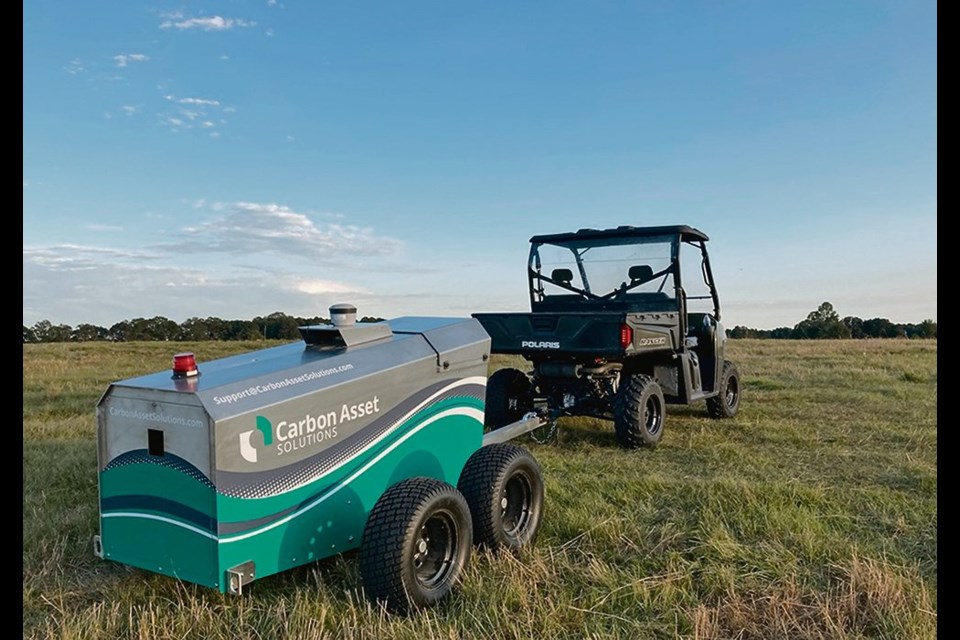WESTERN PRODUCER — After three intense decades following different paths, variable rate fertilizer is still building a following, but not as fast as some predicted.
To learn more about the slow adoption of VRF, The Western Producer turned to field research conducted by Alberta Agriculture agronomists Ross McKenzie and Doon Pauly from 2010 to 2013.
They assessed VRF on five sites, gathering data from 16 site years with canola, wheat, barley and flax. Their results are published in a final report.
The study’s conclusion states there is negligible benefit from VRF in these fields due to sufficiently similar fertilizer response at all slope positions, despite variations in soil properties:
“We tried to apply landform-based variable rate fertilization to field scale work in 2013, but we did not generate reliable data, demonstrating the difficulty of assessing the effectiveness of VRF technology at commercial field scale,” stated the report.
“Although our results demonstrate that Alberta farmers generally do not need to vary fertilizer application within a field to optimize yield or fertilizer use efficiency, the technology is still valuable to avoid fertilizer application to obvious non-productive areas such as saline areas or flood-prone depressions, and ensure uniform application over productive areas with no overlaps or misses,” it said.
For each site, the research team selected target fertilizer rates for upper slope, mid-slope and lower slope management zones based on small-plot strip trials from the preceding years of this project. These zone fertilizer rates became a variable rate fertilizer prescription when mapped across the entire field. In addition to these variable rate prescriptions, the research team also established fixed-rate fertilizer strips that were to run the entire length of the field and were one seeder-width wide. Depending on the site, either two or three fertilizer rates were used in these large strips. There were two replicates of fixed rate strips at each site.
Meyers Norris Penny conducted an analysis after fertilizer expense, crop yield, and crop prices were all known.
MNP used the data for all sites and yield responses regardless of the statistical significance.
In the real world, farmers do not have the luxury of knowing exactly how a growing season will play out for rain, commodity prices and other real costs.
Using hindsights to run the economics of VR is an advantage research trials have that farmer do not. The farmer figuring a return to VR must see into the future and predict an optimum without the benefit of hindsight. Because of this imperfect knowledge, any player in the VR game needs to show even larger yield response to counter the added risks.
For variable rate fertilization zone delineation to be effective, fertilizer rates or treatments must respond or behave differently from one zone to another.
For this project, that means the treatment by slope interaction must be significant. The study found a significant treatment by slope interaction effect on yield in the flax crop at Raymond in 2010. That’s only one response in one of 16 site-years.
Soil conductivity mapping might have detected some differences in soil properties in this field, but these probably would not have been as precise lab analyses. We demonstrated that differences in soil
We thought our treatments and site selection should have shown that landform was useful as the basis for management zone delineation. However, due to the positive correlation between soil fertility and crop yield potential, a constant rate of N fertilizer across the landscape proved just as good as VR on 15 of 16 site years.
The biggest impact of our study will be money saved by Alberta producers who do not invest in VRF equipment and consulting fees until the technology and application of the technology are proven to be cost effective. Evaluation in other regions, environments or management systems may yet reveal fields where delineation and management of fertilizer application zones within fields is worthwhile.
A Lethbridge-based organization that provides precision farming services was invited to participate in this project and initially provided some information on their methodology but subsequently declined to participate any further.
Field research methods (all having the benefit of hindsight) across various regions of the Great Plains of North America has shown that VRN fertilization can increase yield, reduce yield variability and improve economic returns (Yang et al. 2001).
VRN research in Saskatchewan and Manitoba has shown improved N fertilizer efficiency and economic returns in some studies (Beckie et al. 1997; Pennock et al. 2001), but not others (Manning et al. 2001; Walley et al. 2001; Kutcher et al. 2005a; 2005b). The complete Alberta Agriculture report can be found online here.
Other research across the region is ongoing, as the technologies have improved over time and continue to do so.




